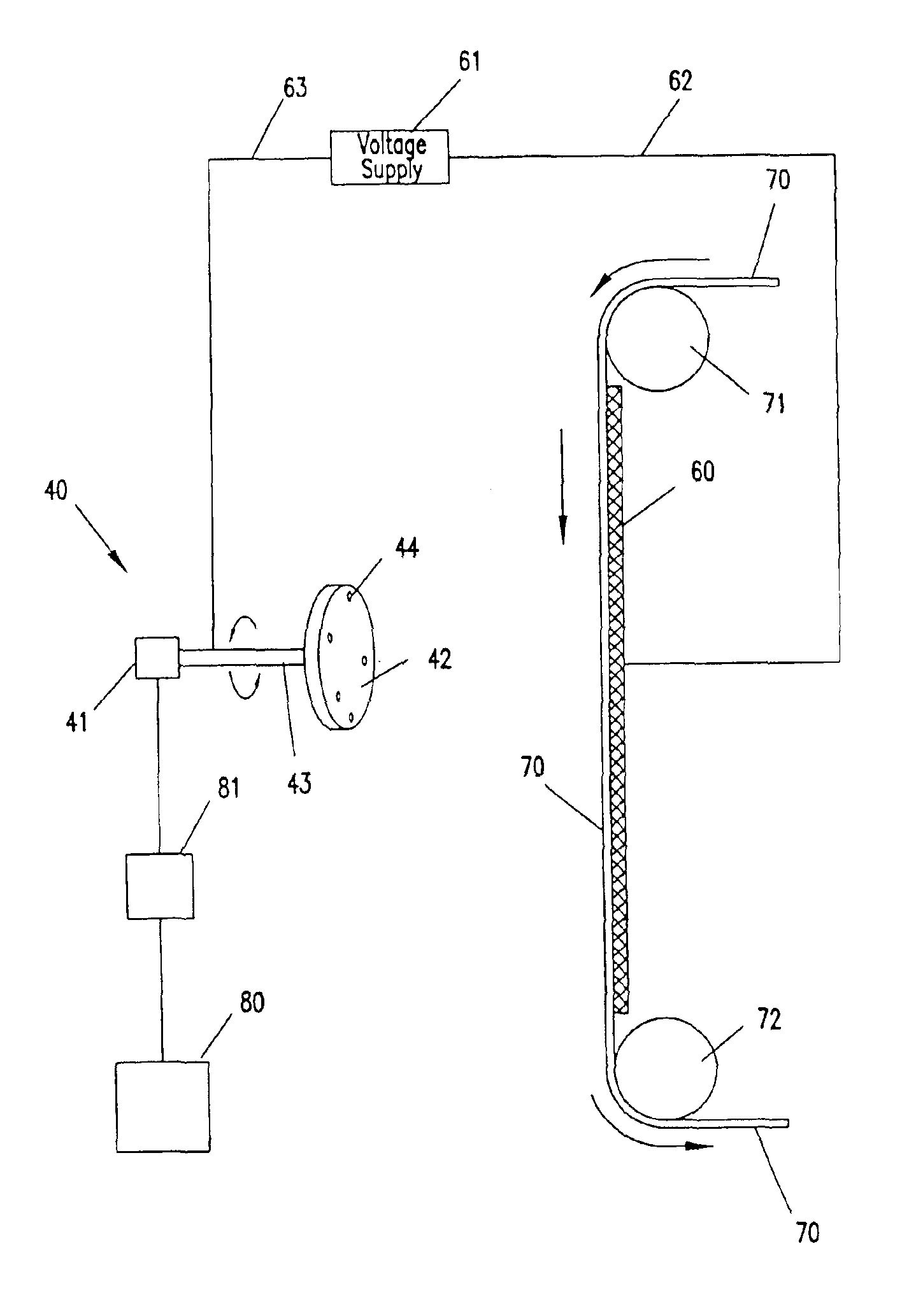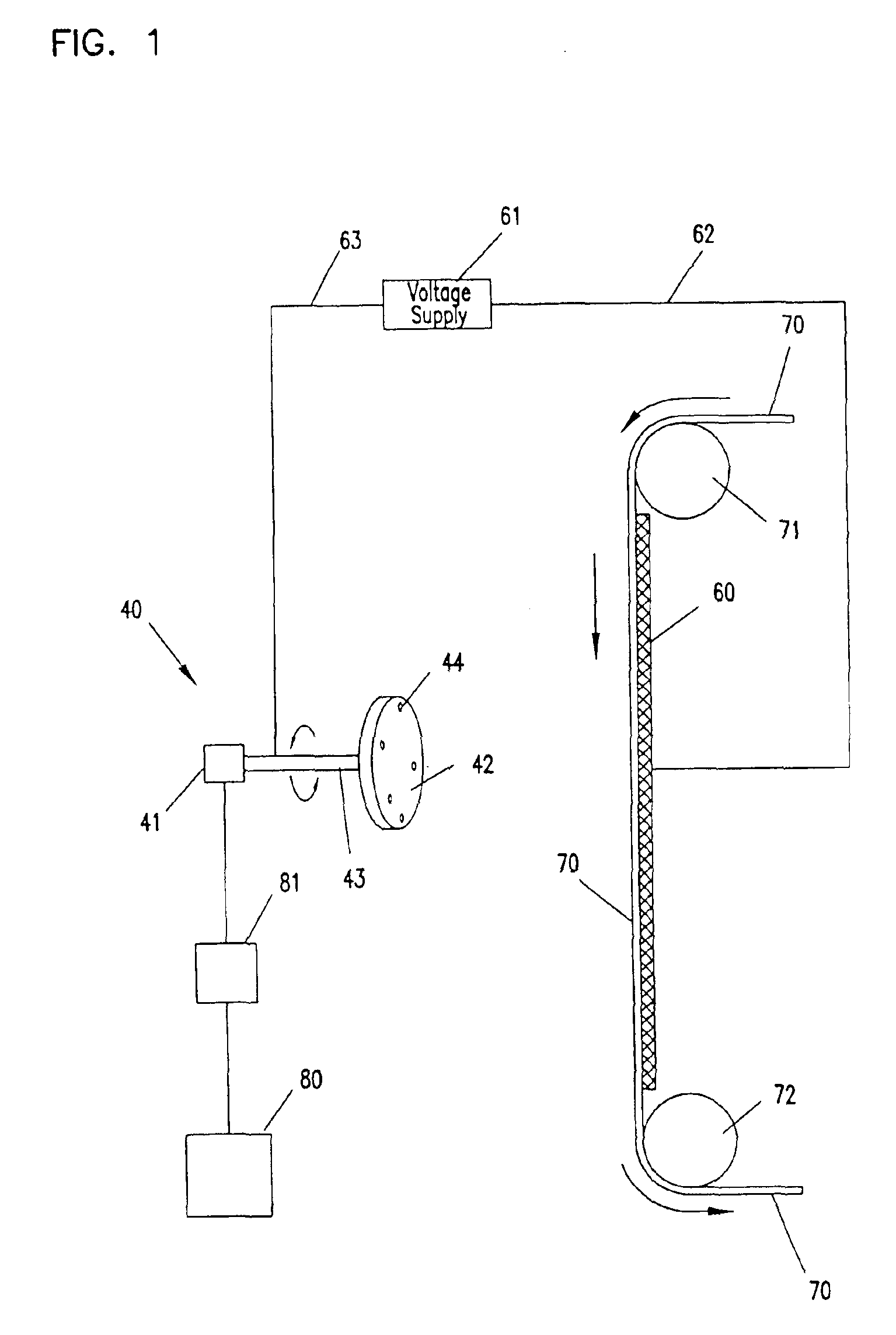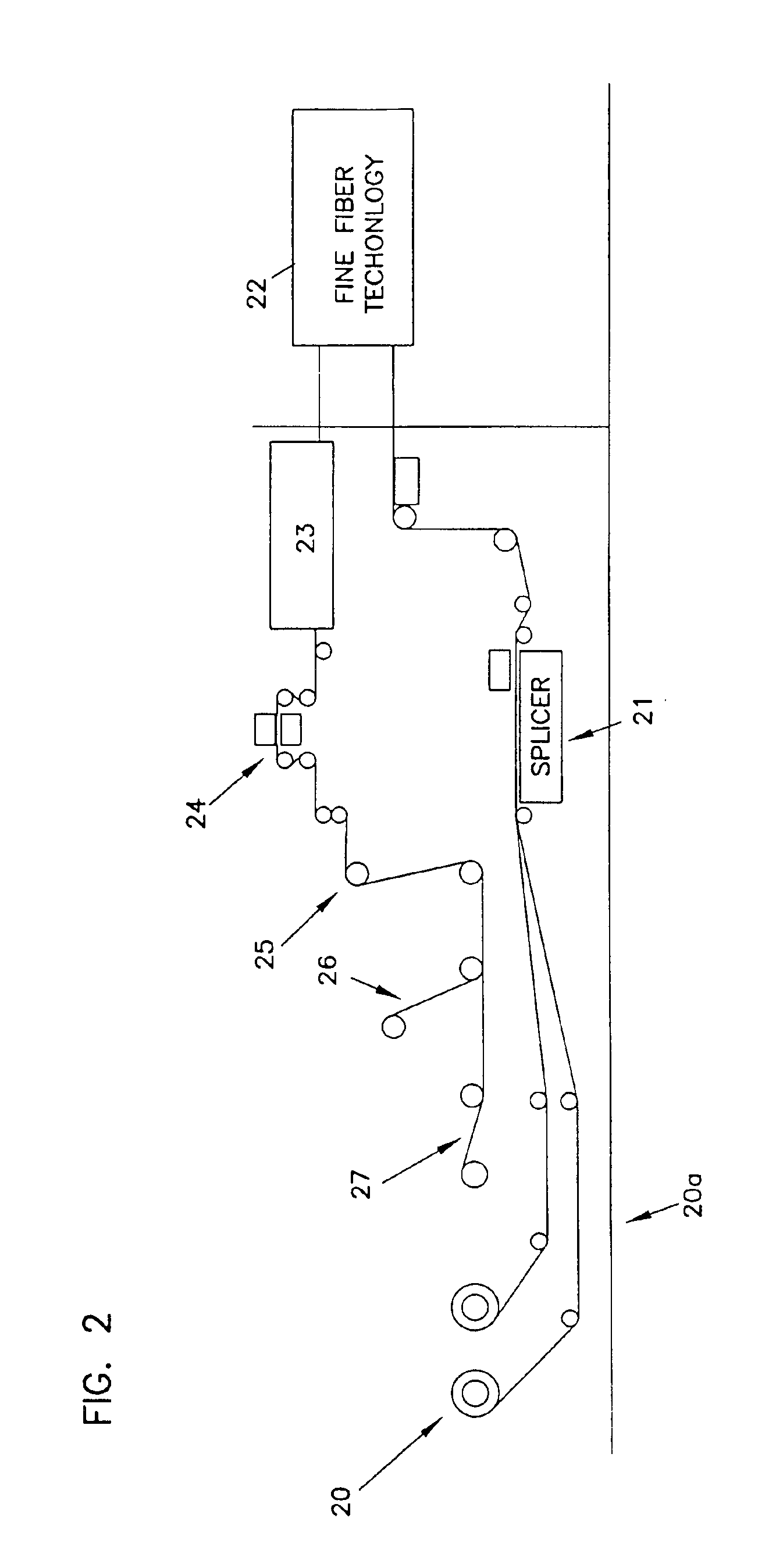Polymer, polymer microfiber, polymer nanofiber and applications including filter structures
a technology of microfibers and polymers, applied in the field of polymer microfibers and polymer nanofibers, can solve the problems of not improving the efficiency of particle capture, and achieve the effects of improving the structure of multi-layer microfiltration media, improving physical and chemical stability, and improving polymeric materials
- Summary
- Abstract
- Description
- Claims
- Application Information
AI Technical Summary
Benefits of technology
Problems solved by technology
Method used
Image
Examples
example 1
Effect of Fiber Size
[0075]Fine fiber samples were prepared from a copolymer of nylon 6, 66, 610 nylon copolymer resin (SVP-651) was analyzed for molecular weight by the end group titration. (J. E. Walz and G. B. Taylor, determination of the molecular weight of nylon, Anal. Chem. Vol. 19, Number 7, pp 448-450 (1947). Number average molecular weight was between 21,500 and 24,800. The composition was estimated by the phase diagram of melt temperature of three component nylon, nylon 6 about 45%, nylon 66 about 20% and nylon 610 about 25%. (Page 286, Nylon Plastics Handbook, Melvin Kohan ed. Hanser Publisher, New York (1995)).Reported physical properties of SVP 651 resin are:
[0076]
PropertyASTM MethodUnitsTypical ValueSpecific GravityD-792—1.08Water AbsorptionD-570%2.5(24 hr immersion)HardnessD-240Shore D65Melting PointDSC° C.(° F.)154 (309)Tensile StrengthD-638MPa (kpsi)50 (7.3)@ YieldElongation at BreakD-638%350Flexural ModulusD-790MPa (kpsi)180 (26)Volume ResistivityD-257ohm-cm1012
to p...
example 2
Cross-linking of Nylon Fibers with Phenolic Resin and Epoxy Resin
[0077]In order to improve chemical resistance of fibers, chemical cross-linking of nylon fibers was attempted. Copolyamide (nylon 6, 66, 610) described earlier is mixed with phenolic resin, identified as Georgia Pacific 5137 and spun into fiber. Nylon:Phenolic Resin ratio and its melt temperature of blends are shown here;
[0078]
CompositionMelting Temperature (° F.)Polyamide: Phenolic = 100:0150Polyamide: Phenolic = 80:20110Polyamide: Phenolic = 65:3594Polyamide: Phenolic = 50:5065
[0079]We were able to produce comparable fiber from the blends. The 50:50 blend could not be cross-linked via heat as the fibrous structure was destroyed. Heating 65:35 blend below 90 degree C. for 12 hours improves the chemical resistance of the resultant fibers to resist dissolution in alcohol. Blends of polyamide with epoxy resin, such Epon 828 from Shell and Epi-Rez 510 can be used.
example 3
Surface Modification Though Fluoro Additive (Scotchgard®) Repellant
[0080]Alcohol miscible Scotchgard® FC-430 and 431 from 3M Company were added to polyamide before spinning. Add-on amount was 10% of solids. Addition of Scotchgard did not hinder fiber formation. THC bench shows that Scotchgard-like high molecular weight repellant finish did not improve water resistance. Scotchgard added samples were heated at 300 F.° for 10 minutes as suggested by manufacturer.
PUM
| Property | Measurement | Unit |
|---|---|---|
| size | aaaaa | aaaaa |
| diameter | aaaaa | aaaaa |
| temperature | aaaaa | aaaaa |
Abstract
Description
Claims
Application Information
 Login to View More
Login to View More - R&D
- Intellectual Property
- Life Sciences
- Materials
- Tech Scout
- Unparalleled Data Quality
- Higher Quality Content
- 60% Fewer Hallucinations
Browse by: Latest US Patents, China's latest patents, Technical Efficacy Thesaurus, Application Domain, Technology Topic, Popular Technical Reports.
© 2025 PatSnap. All rights reserved.Legal|Privacy policy|Modern Slavery Act Transparency Statement|Sitemap|About US| Contact US: help@patsnap.com



